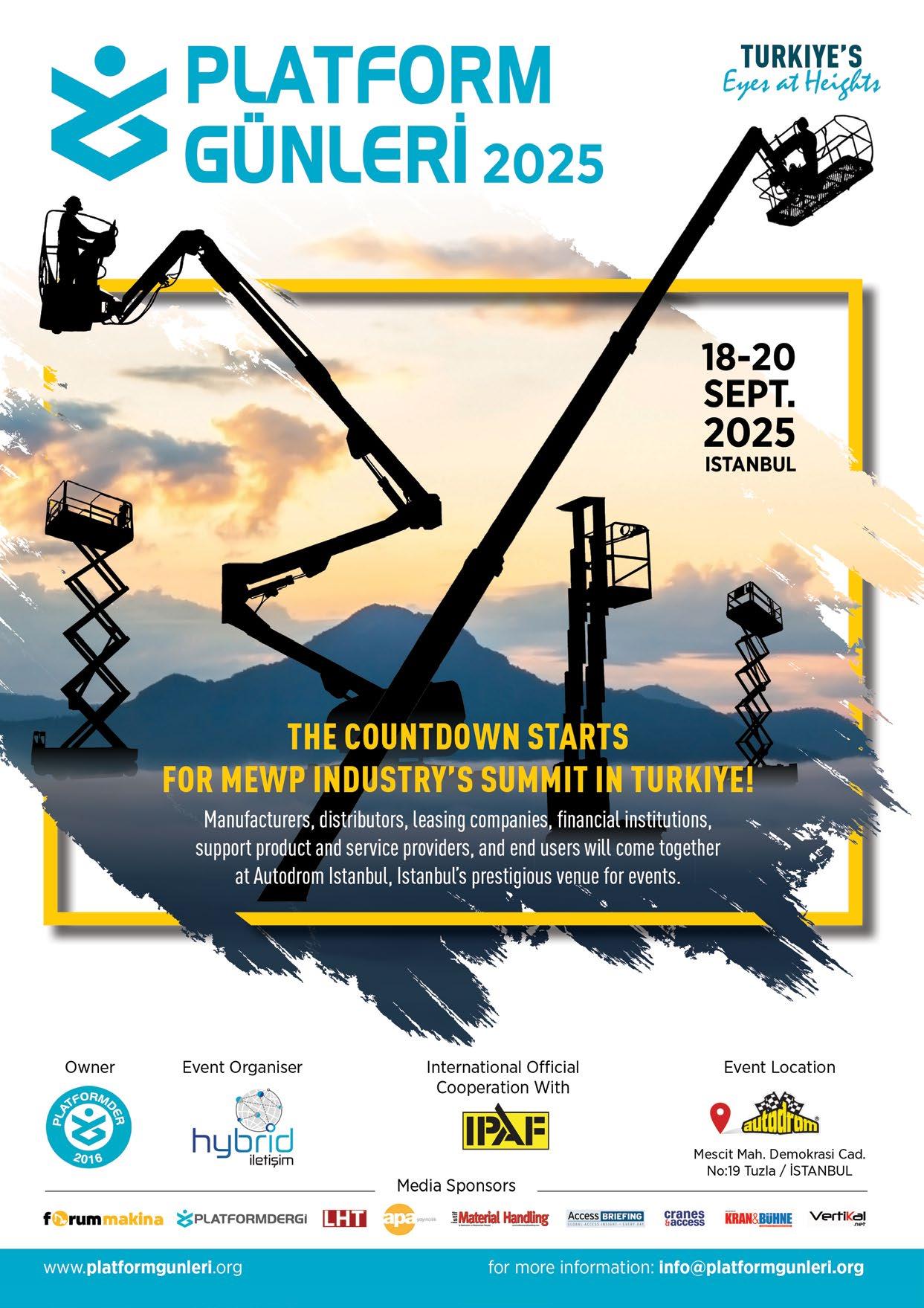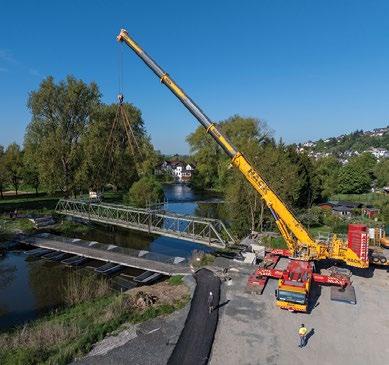
23 minute read
Hybrids to the fore
Hybrids to the fore
In last year’s All Terrain crane feature we said that the sector was relatively quiet because manufacturers were gearing major model launches to coincide with this year’s Bauma. Unfortunately, the big international show has come and gone and, to be perfectly honest, new All Terrain cranes were rather thin on the ground.
That is not to say there were no new launches - there were several - but nothing radical or different, more just a tweaking of boom lengths/capacities and of course the growing eco hybrid and electric drive systems - even if customers do not want to pay the price premium being asked.
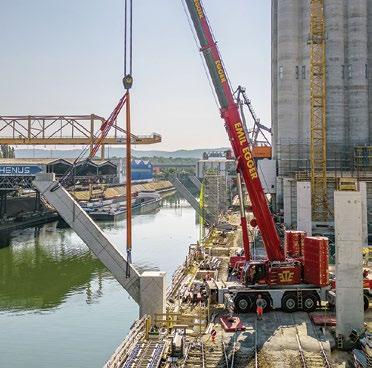
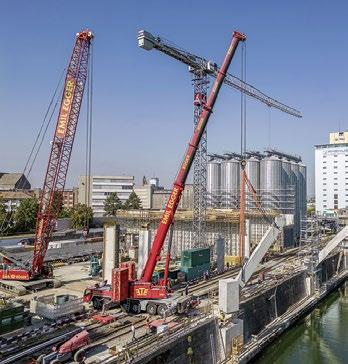
Liebherr has embedded its position as the dominant All Terrain crane manufacturer with around a 50 percent share of the international, non-Chinese market. In some countries such as the UK, Germany and the Benelux region this figure may be nearer 70 percent or more. Its success was highlighted in 2023 when the company produced more than 2,000 All Terrain cranes for the first time in its history. And while 2,000 small cranes might be impressive, Liebherr says that the majority of its production was cranes with four or more axles.
Liebherr’s ongoing rise is possibly not all related to having a better product - there are other reasons at play. However, with only two other major players - Tadano and Manitowoc/Grove - the lack of disruptive competition is surely a factor. Tadano’s problems integrating the Demag mobile crane business following its acquisition from Terex in 2019 has certainly created opportunities for Liebherr. Six years have passed since the acquisition and few would claim that Tadano has got back to where it was prior to the takeover, at least in Europe. In North America the situation is quite different, and Tadano remains very strong. It is also Tadano’s most profitable overseas market so has a lot of focus and independence.
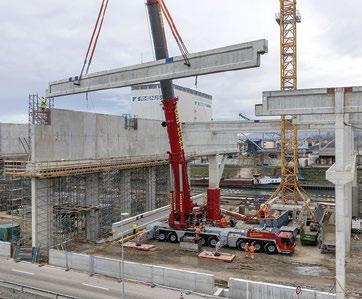
Manitowoc/Grove has been steadily improving sales after going through a tough patch dating back to around 2015 when it separated from its food division, culminating in the almost total disaster of its misguided and farcical tariff petition claim against German and Japanese All Terrains at the end of 2019. The current chief executive Aaron Ravenscroft saved the day by managing to have the petition and investigation withdrawn at the last minute after stepping into the role. Since then, it has been slowly but perhaps steadily regaining its position in the market, possibly helped along a little by Tadano’s internal woes, but mostly due to the introduction of several popular new models, with long booms and improved features. It must be remembered that Grove was the dominant player until All Terrains arrived, having been the first major company to enter the AT market, only to pull out when it could not stomach the dreadful unreliability of those early models. Liebherr had similar issues, but persevered and that led to its current market leadership. Grove acquired Krupp to try and get back in the game but has yet to regain its pre AT era position. Its new models, a growing focus on direct support and service plus its push into hybrids will all help its ongoing progress.
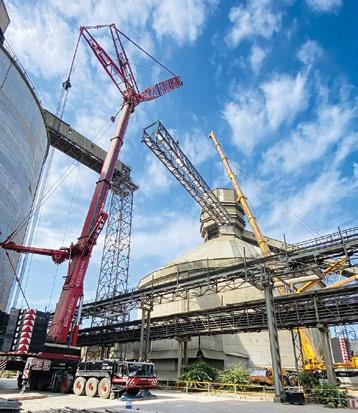
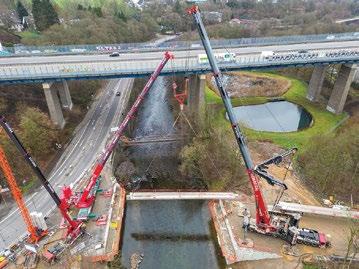
So, considering all this, it is difficult to see quite how the market develops over the next few years. Given that Sany and XCMG have started to make some inroads is likely that when we look back in five years, we will see a more fragmented market with more suppliers and more choice for buyers, especially in the smaller end up to four axle, 120 tonne models, as we have seen in the aerial lift market in recent years. How that develops beyond that will depend on the three major western manufacturers.
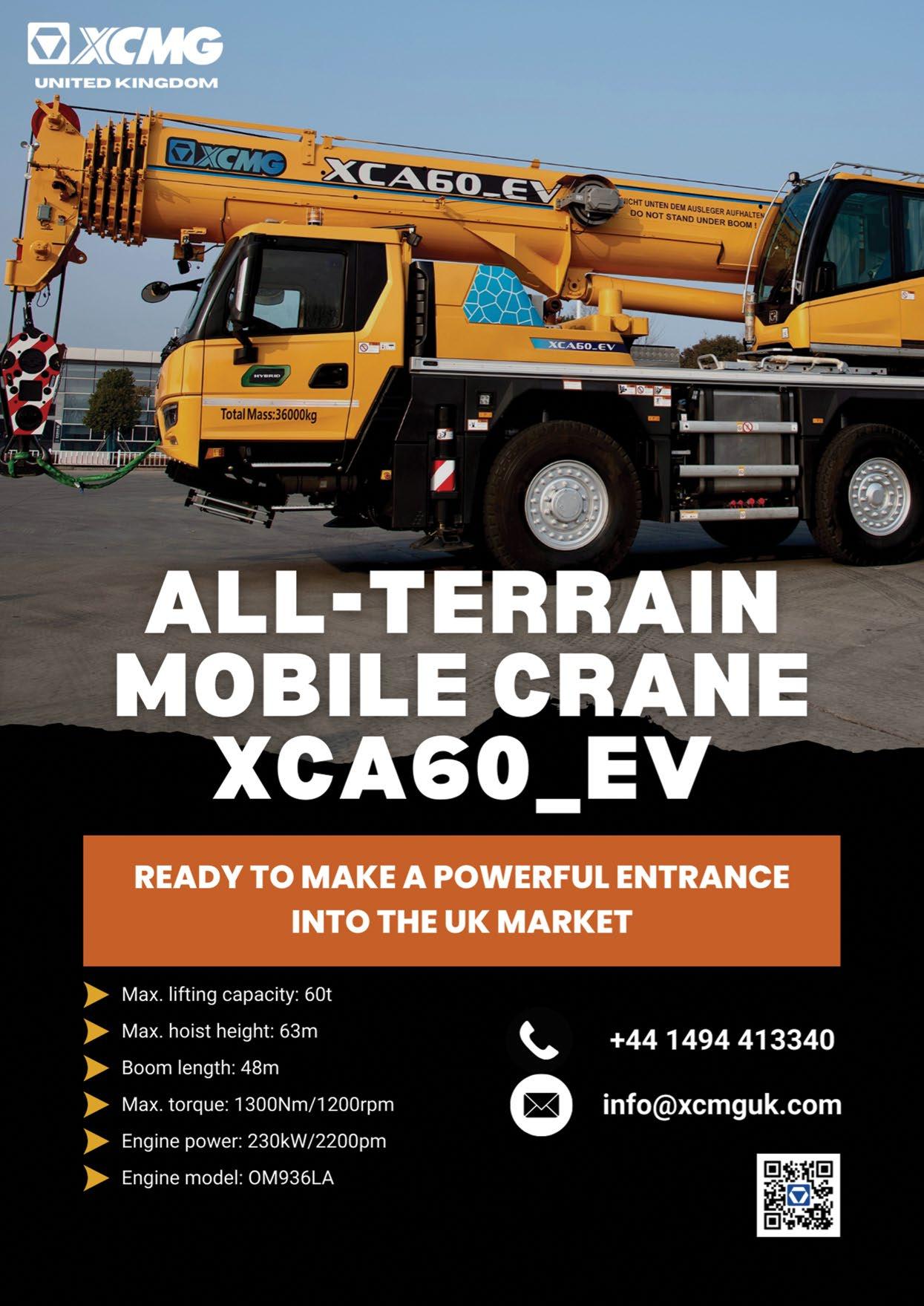
Liebherr quartet
All Liebherr ATs are manufactured at Liebherr’s plant in Ehingen, Germany, with the range extending from a two axle 35 tonner up to the nine axle 1,200 tonne LTM 11200-9.1. The latest new models include the 150 tonne LTM 1150-5.4 which has been converted to the new Liccon3 control system, the battery electric powered LTM 1150-5.4E variant, the 120 tonne LTM 1120 with Liccon3 control system and at Bauma it presented what it claims is the lightest three axle All Terrain on the market - the LTM 1055-3.3.
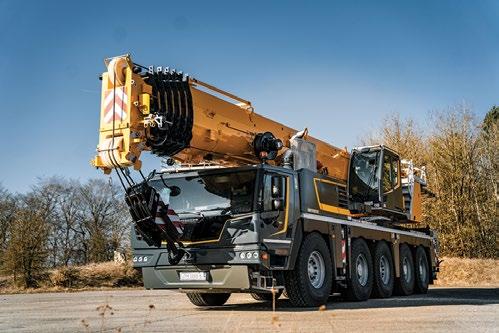
The five axle LTM 1150-5.4E features electric drive for the crane functions via an integrated battery which allows the crane to work autonomously with reduced air and noise emissions for up to four hours without a power connection. When plugged into a 16 or 32 Amp power outlet, the crane can work at full power, as the battery acts as an efficient buffer.
The superstructure is driven by a large electric motor mounted on the transfer box on the chassis and uses the existing drive shafts that take the power up through the slew ring to a pump transfer box in the superstructure. This simple solution enables the operator to switch between dieselhydraulic power and electro-hydraulic power and is said to offer similar performance as the six cylinder diesel.
When plugged in the crane draws high power peaks from the battery which is constantly recharged via the mains power source. Charging takes place via the CEE high current plug with 16, 32 or 64 Amps with up to 44kW of power or via a modern CCS plug for fast 80kW charging. The battery pack is contained in a box weighing around 1.5 tonnes mounted at the rear of the crane. The chassis uses a Stage V, HVO ready diesel which Liebherr says reduces operational CO2 emissions by up to 90 percent compared to regular diesel fuel.
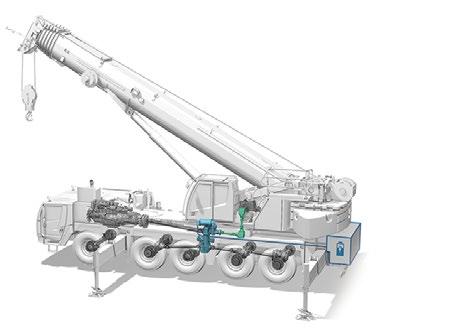
The new crane has similar performance to its predecessor, the LTM 1150-5.3, which was introduced in 2020 with a 66 metre boom, lifting 9.1 tonnes at full extension making it ideal for erecting tower cranes and radio masts etc. It can also carry up to nine tonnes of counterweight within 12 tonne axle loads.
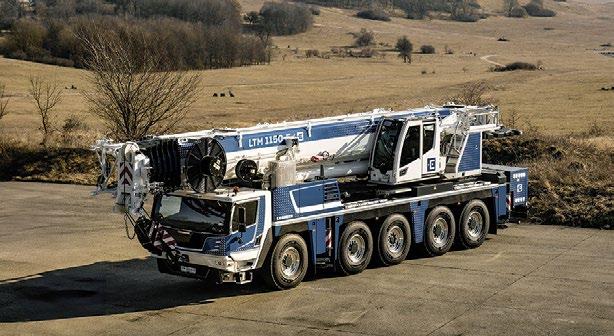
Upgrades
The upgraded 120 tonne LTM 1120-4.2 is physically similar to the LTM 1120-4.1 apart from the addition of the Liccon3 control system. The new four axle crane retains the same seven section 66 metre main boom, 10.8 to 19 metre bi-fold swingaway extension, VarioBase variable outrigger set up and VarioBallast adjustable counterweight. However, it incorporates several enhancements, including improved driver assistance systems, a TraXon DynamicPerform clutch system for smoother starts, a newly designed driver’s cab.
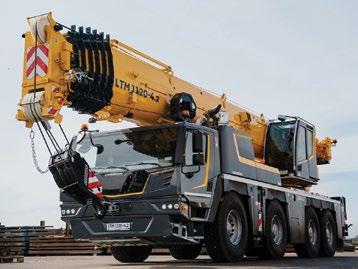
The Liccon3 control system offers faster data processing and expanded memory, complemented by a new touchscreen display with fully integrated telematics and fleet management features. Additional enhancements include a central lubrication system and a digital tyre pressure monitor.
Less weight
At Bauma Liebherr launched its lightest three axle All Terrain to date, the 55 tonne LTM 1055-3.3aimed at complying with complex and restrictive driving permits worldwide. Its predecessor - the LTM 1055-3.2 - dates back to 2001 as the LTM 1055/1. Continuously developed over the years, the company has shipped 2,300 units, making it the top selling All Terrain of all time.
The new LTM 1055.3.3 features the new Liccon3 control system, significantly lighter fabrications, but with the same 40 metre boom length. Lower axle loads avoid the need for costly authorisations and restrictions in place in many markets.
Being lighter the new crane can carry nine tonnes of counterweight on board - 80 percent of its maximum - within 12 tonne axle loads, compared to just 5.5 tonnes on its predecessor. With the full 11 tonnes of counterweight on board axles loads are just 14 tonnes. When removed axle loads of below nine tonnes and a GVW of 26 tonnes is possible. This means, for example, that a nationwide long term driving permit is available in Germany with no restrictions. This also applies to operation with a two axle trailer, which can carry the entire ballast, which can be self-installed in one piece.
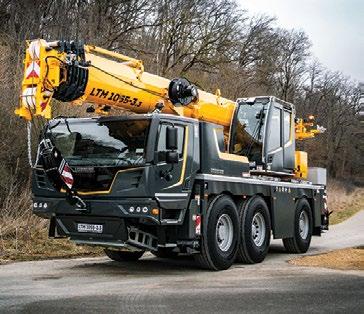
Liebherr claims that with its maximum ballast for 12 tonnes an axle, the LTM 1055-3.3 outperforms the other three axle models from a radius of eight metres out. From a radius of 20 metres, it says it is on par with four axle cranes.
When the 15 metre bi-fold swingaway extension is installed the maximum tip height is just over 58 metres and a radius of up to 46 metres. A 1.9 metre assembly jib has also been newly developed, which can be angled to 50 degrees, ideal for assembly work in industrial halls where space is limited.
The crane also features the Blind Spot Information System (BSIS) and the Moving Off Information System (MOIS) providing additional protection for other road users such as pedestrians and cyclists. In addition, the LTM 1055-3.3 will be prepared for the use of RemoteDrive - moving the crane via remote control - as standard, a central lubrication system for the chassis and a digital tyre pressure indicator.
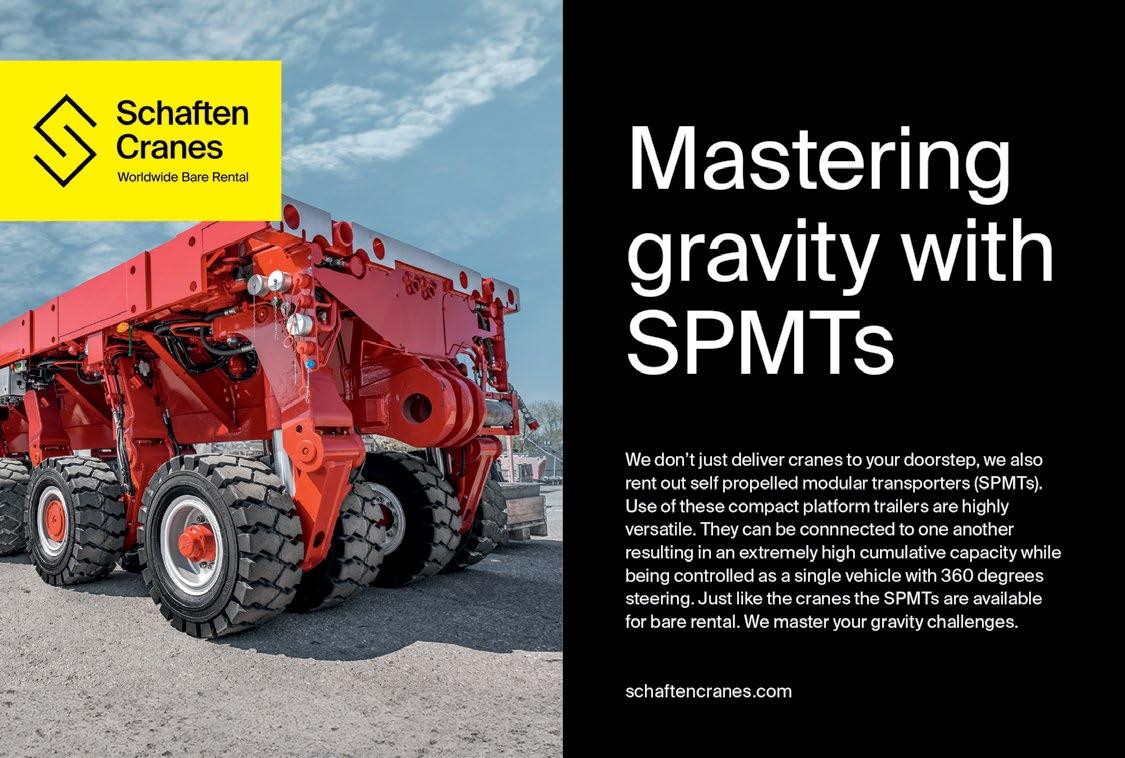
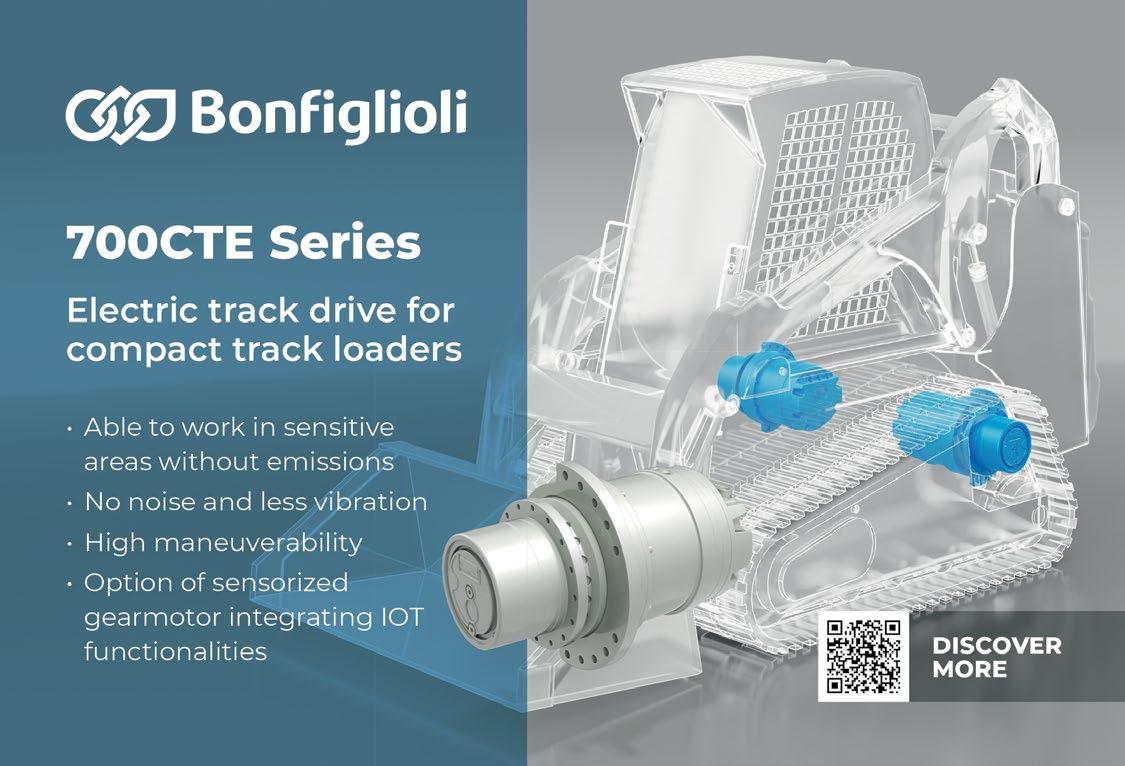
Tadano at Bauma
The main thrust of Tadano’s stand at Bauma was the launch of the 1,250 tonne CC 78.1250-1 lattice crawler crane as well as the integration of the recent acquisitions of Nagano, Oil&Steel, Valla and PM under the Tadano brand. However, the company did launch a couple of new All Terrains including the hybrid 120 tonne AC 5.120H-1 and the long boom version of the 250 tonne AC 5.250L-2.
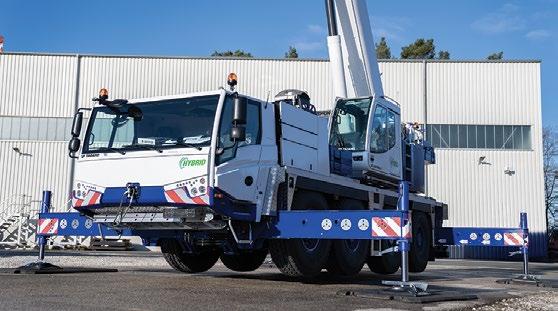
Tadano has been promoting its work on hybrid cranes for several years launching the world’s first electric RT crane - the GR-1000XLL Evolt - at Conexpo 2023 and the prototype four axle hybrid AT at the previous Bauma in 2022. The company now has two new market ready hybrids that use a battery pack to power the superstructure.
The AC 4.070HL-1 is the four axle 70 tonner seen as a prototype in 2022, followed by a series of field trials. Tadano says the corresponding pre-production model trials have received an overwhelmingly positive response in real life use. The 120 tonne AC 5.120H-1, has been developed with the benefit of these trials and is the next model in the series.
The hybrid cranes form part of Tadano Green Solutions (TGS) environmental protection strategy which aims to reduce company CO2 emissions between 2019 and 2030 by 25 percent globally - 35 percent across the board reduction from its products - and be completely climate neutral by 2050. It says that hybrid cranes are an important step towards this as their CO2 emissions are at least 60 percent lower than all diesel models, adding that electric crane operation has a system efficiency of about 85 percent, more than double that of diesel power.
Both the new ATs use a diesel powered chassis but are fully electric when set up on site. The high-voltage (HV) battery in the superstructure powers an electric motor as well as the thermal management system and the superstructure cab’s air conditioning. The electric motor powers the pump and hydraulic system from the regular diesel crane. The hybrid cranes can be operated both either with their own battery power or when plugged into an external power source, such as temporary work site power which not only extends the crane’s electric runtime but can also relieve the load on the battery. In addition, the hybrid cranes remain fully operational even when the battery is fully depleted and no external power supply is available.
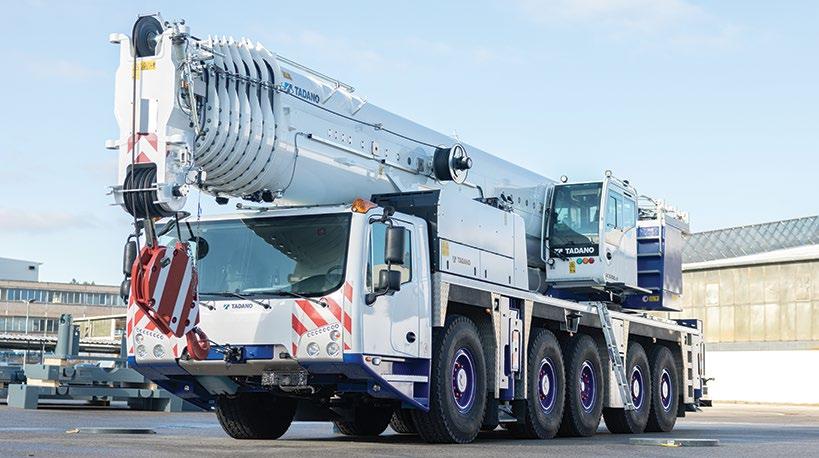
This is due to a generator that is driven by a power take-off on the carrier’s diesel engine that tops up and recharges the battery pack. The hybrid cranes also feature a separate 24 volt vehicle electrical system that can be used for derigging in case of emergency.
The hybrid crane design was planned in such a way as to be used across several models, so that Tadano’s electrification for the AC 5.120H-1 is based directly on that of the AC 4.070HL-1. The front section of the five axle crane’s superstructure supports an optional second battery pack. This doubling of the battery capacity to 140kWh means that battery electric operation for a full working day without external charging is possible. Thanks to the compact rear storage box next to the vehicle inlet, it can be used carry the usual crane equipment. The generator drive runs maintenance free directly off the transfer case between the second and third axles.
Long boom 250 tonner
The Tadano AC 5.250L-2 is a long boomed version of its five axle 250 tonne AT. The new crane has an eight section, 79 metre main boom instead of a seven section 70 metre boom on the current 250 tonner. Its 5.8 to 30 metre lattice extensions take the maximum system length to 109 metres. Like the basic AC 5.250-2 model, the long boom version has 10 x 6 drive and can comply with 12 tonne axle load limits even when carrying a hook block and outriggers, transport brackets for extensions, and up to 250kg of equipment in the rear box. In regions where 16.5 tonne axle loads are permitted, the AC 5.250L-2 can also carry a 12 metre extension, 20 tonnes of counterweight and up to 500kg of equipment in the rear box.
The AC 5.250L-2 can install its maximum 80 tonne counterweight in three lifts. However, if required, the counterweight can be divided. The crane features the IC-1 Plus crane control system which determines the maximum capacity of the crane in real time taking the outrigger set up, counterweight, slew position and boom configuration to supply the maximum available capacity - especially when lifting over one of the rear outriggers - which comes to the fore when operating with partial counterweight. The outriggers can be extended asymmetrically to five positions of 0, 25, 50, 75 and 100 percent. The optional six camera Surround View system makes it easier for the operator to position the crane on site.
The AC 5.250L-2 has a Stage V, HVO compliant Mercedes engine, with Eco Mode, where the engine only delivers as much power as the crane needs at any given time. The corresponding calculations are made via the IC-1 crane control system, which also includes a fuel saving start/stop function. Tadano also launched a 3D job planner scheduled for release in the third quarter of this year.
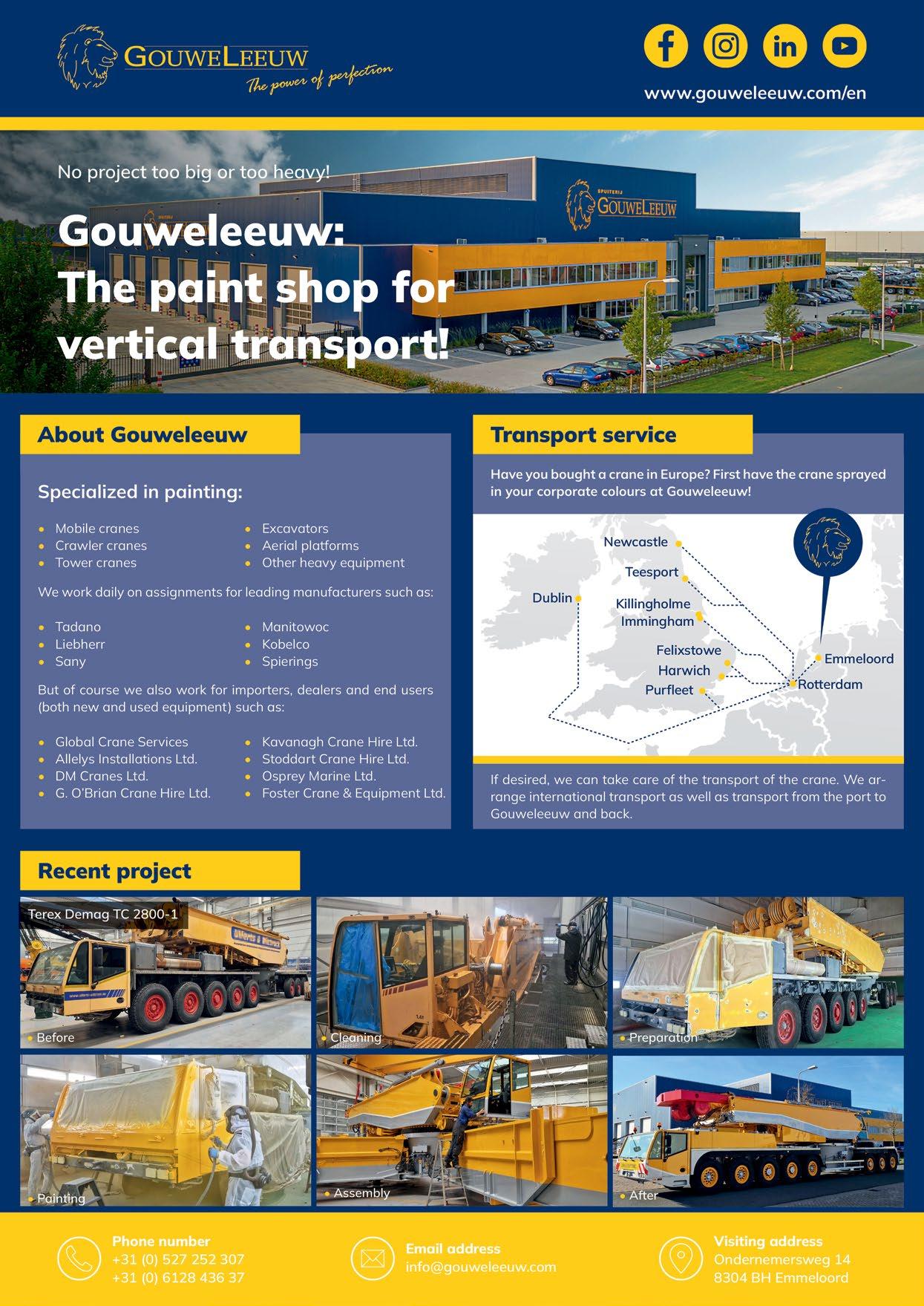
Grove hybrid ATS
The third major global All Terrain manufacturer Grove also used Bauma to add new hybrids including the 150 tonne GMK5150L-1e with a 60 metre boom and GMK5150XL-1e which has a 68.7 metre boom. Both models have exactly the same load charts as their diesel counterparts, as well as sharing most of the componentry including the CCS control system with boom configurator and the MAXbase variable outrigger set up.
The new cranes combine electric powered superstructures with Grove's regular five axle carrier. The hybrid system features a 180kWh battery pack that provides around five hours of emission free operation. When connected to mains power, this extends to 20 hours without affecting lift speeds or capacities.
The cranes can be charged from both AC and DC power supplies or through an integrated 170kW generator in the carrier. The battery pack is also recharged while driving on the road, ideally using HVO fuel.
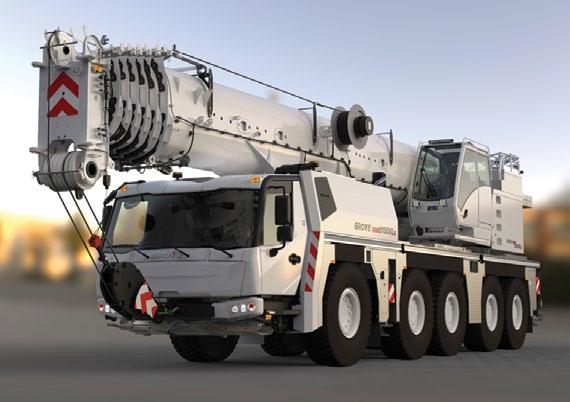
Senior product manager Florian Peters said: "These new Plug-in Hybrid cranes deliver more sustainable lifting and boost owners' environmental credentials. They can drive to the job site using HVO fuel to power the fuel efficient engine, reducing carbon emissions by up to 90 percent while simultaneously recharging the batteries. They can then set up and use clean electricity to handle the lifting tasks. There's also a massive reduction in noise pollution - a great advantage when operating in a city centre. Many cities and industrial sites are placing increasingly strict environmental requirements on any machinery, so there is a need to provide customers with options to help them achieve their commercial and environmental goals. We expect a lot of interest in these hybrid cranes.”
Extra cover
Manitowoc has also introduced its new Extended Service Coverage (ESC) programme for Grove GMK All Terrain cranes in North America. ESC is designed to provide support for crane owners with three levels of coverage. ‘Essential’ protects components such as the powertrain, axles, transmission, drivetrain, engine, and critical boom parts. ‘Plus’ expands protection to include the hydraulic system and lifting equipment, while ‘Platinum’ offers the most protection, including all technology, electronics, and an annual inspection. Available through the company’s dealer network it replaces the previous extended warranty option. Coverage can be paused in certain situations, transferred to new owners during the sale of a crane, or cancelled for a pro-rata refund. ESC is available for a wide range of GMK crane models with Manitowoc planning to extend the program to countries in South America and Europe and may add other product lines to the programme in the future.
Grove 450T upgrade
Late last year Grove upgraded its 400 tonne GMK6400-1 six axle All Terrain crane to the 450 tonne GMK6450-1. The new model retains most of the 400 tonner’s specifications and structure, including the five section 60 metre main boom and 79 metres of luffing jib for a 136 metre maximum tip height. Other features include Maxbase variable outrigger set up and the ‘Mega Wing’ self-rigging Superlift system, which increases capacities by up to 70 percent on the main boom and 400 percent on the luffing jib. The GMK6450-1 has been designed with wind power projects in mind that require flexible set-up distances to the turbine and the ability to lift heavy loads at steep vertical angles. It can also lift in wind speeds of up to nine metres a second, with its full luffing jib installed.
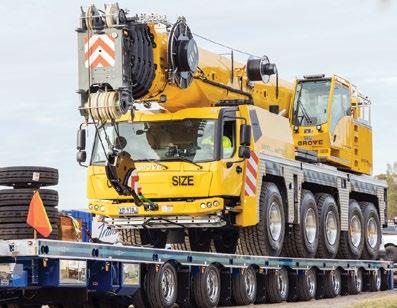
Vice president product and project management Andreas Cremer, said: “Over the past two years, we have seen a growing demand for a name change from our global customer base.
We reviewed the crane’s performance, which resulted in a new model, the GMK6450-1.”
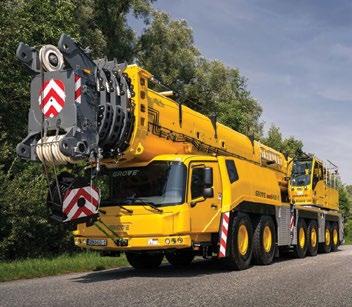
New 200t Link-Belt
Towards the end of last year Link-Belt Cranes launched a new, single engine 200 tonne five axle All Terrain crane, the 225|AT. The new crane is based on the 185 tonne ATC-3210 launched in 2014 but features a slightly longer six section latched boom - 62 metres compared to 61 metres - as well as more counterweight, while being just as manoeuvrable.
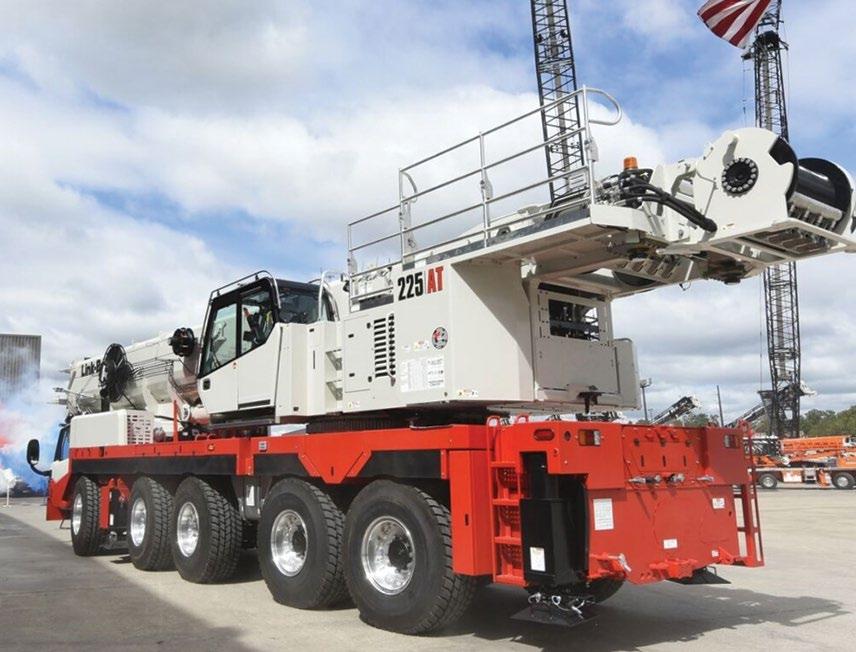
A 13 to 22 metre bi-fold offsetable swingaway extension to which two 7.6 metre lattice extension sections can be added provides a maximum tip height of just less than 102 metres. The crane features Link-Belt’s Pulse 2.0 operating system, ‘SmartStack’ counterweight detection, its ‘V-Calc’ Variable Confined Area Lifting Capacities, and variable outrigger set up and monitoring system, providing virtually unlimited outrigger configurations. Finally, a radio remote controller for rigging is also included.
Power comes from an EPA compliant Cummins X-15 HVO ready diesel, driving a ZF TraXon transmission, providing a top road speed of 55mph. This unit also features the company’s full width carrier cab. Overall width to the outside of the tyres is 3.3 metres, the overall height 4.1 metres and overall length with the rear winch installed 17.1 metres. On its fully extended 61.5 metre main boom it can lift 16.6 tonnes at a 10.7 metres radius and just under a tonne at 33.5 metres.
Product Manager Andrew Soper said: “We are excited to add the 225|AT to our All Terrain range. I cannot wait for customers to experience this crane, with its new features, increased capacities, and superior transportability.”
The closest competitive model to the Link-Belt is Liebherr’s 180 tonne LTM1160-5.2 but it has a substantially larger maximum counterweight at 54 tonnes. The nearest Grove models are the 180 tonne GMK 5180-1 and GMK5200-1, both of which boast 64 metre booms and similar tip heights, and significantly more counterweight of 50 and 70 tonnes respectively. Tadano’s 160 tonne AC 5.160-1 offers the longest main boom at 68 metres and 46 tonnes of counterweight. The larger 220 tonne Tadano AC 5.220L-1 has a 78 metre main boom, 106 metre maximum tip height and up to 70 tonnes of counterweight.
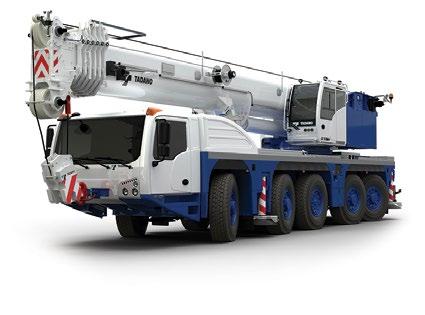
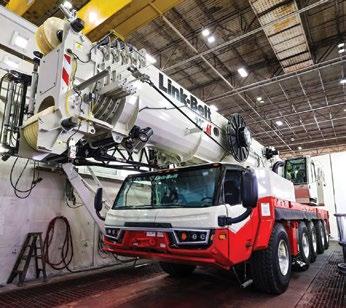
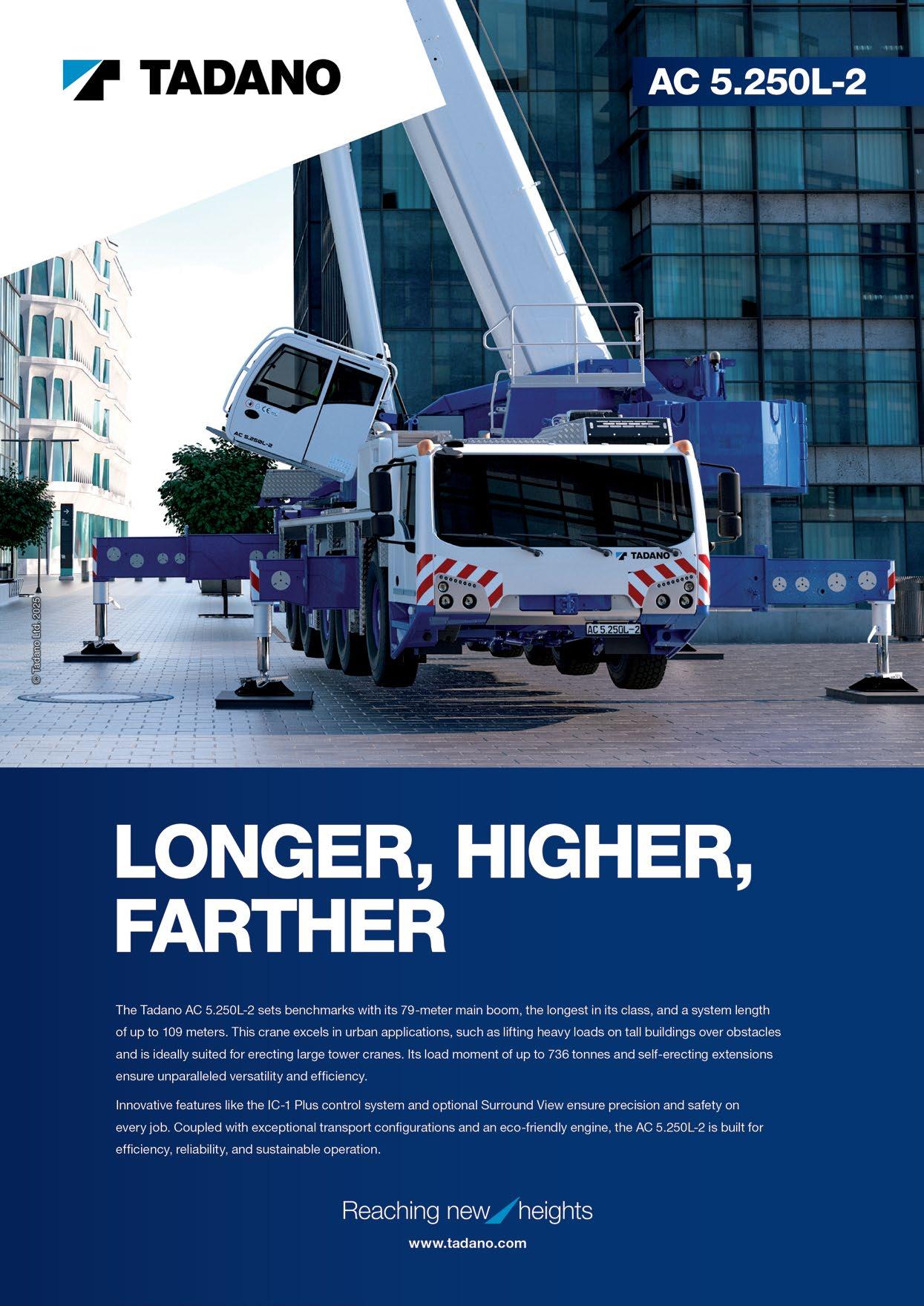
Chinese ATs
For the up and coming Chinese manufacturers the process of developing a crane that is truly accepted in major European markets is a massive challenge. Developing a high spec technically competitive product will not cut it. Convincing customers to swop from their existing western suppliers/manufacturers with their well established resale values and product support is a Herculean task. Even if they can be sold at a lower price, this cannot replace quality or great service and parts supply. And if they are sold too cheaply they will attract anti-dumping tariff petitions.
The embargoes on Western companies selling to Russia following its invasion of Ukraine has given Chinese crane manufacturers free reign in the large Russian market, which must be helping with production volumes and on site experience.
Two companies seem to be making the most headway - Sany and XCMG. Sany has slowly but steadily been introducing European models to join its relatively well established European crawler cranes.
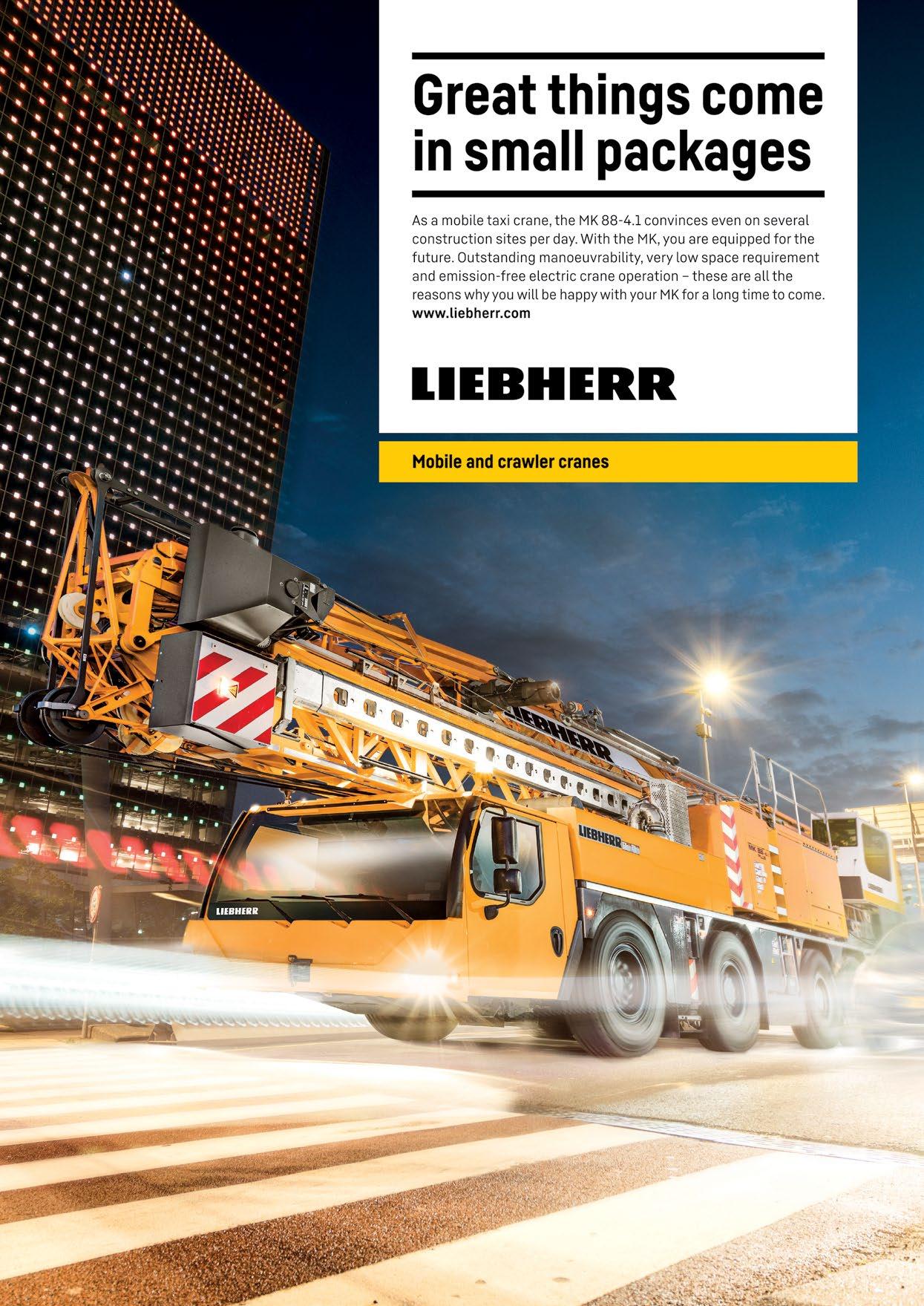
Last year the company announced plans to take a serious run at the German, Swiss and Austrian mobile crane market. It sees Germany and the German speaking region as, understandably, the most challenging and demanding crane market in Europe, and if it is to become a serious force in Europe it needs to become an established 'player' in Germany.
The new push will centre around the company’s existing facility in Bedburg, east of Cologne, where it will hold significant inventory of new cranes for fast delivery, along with replacement parts and a service support base.
Sany opened the Bedburg facility for its earthmoving and other products in 2011 and it now employs around 120 people in sales, service and product preparation roles.
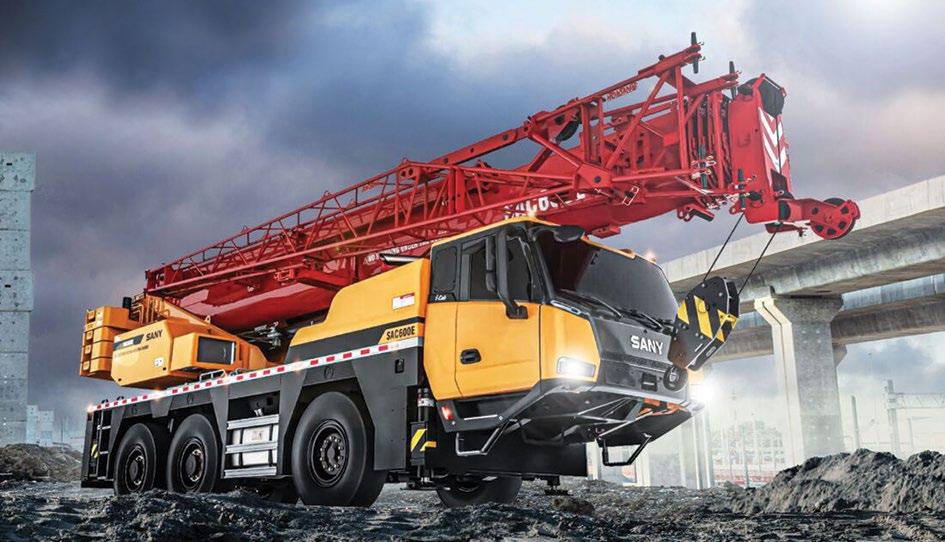
Last year it claims to have sold and delivered almost 5,000 machines to customers in Europe with a value of around €170 million.
Sany Cranes sales manager for the region, Christian Straßer said: "With mobile and crawler cranes tailored to this market, including All Terrain cranes, telescopic crawler cranes, and truck mounted cranes, we want to establish ourselves here with durable, robust and innovative products.”
Sany is one of the top 10 global construction equipment manufacturers, with overall revenues of €16.7 billion in 2022, with around 55,000 employees worldwide. At Bauma it launched the new 120 tonne, four axle SAC1200E with a 66 metre main boom and a 90 metre maximum lift height. The twin engine crane has a maximum counterweight of 33 tonnes. Features include remote radio control and a new generation, plusher upgraded cab.
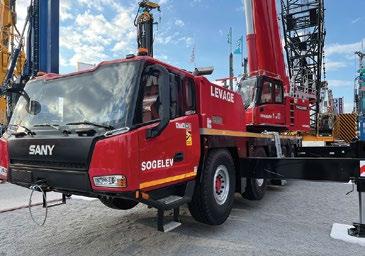
Its first European crane was the three axle 60 tonne SAC600E which has sold well, it features a six section 50 metre boom and 16 metre bi-fold swingaway extension for a maximum tip height of around 69 metres. Recent sales have included Italian crane rental company Vernazza Autogrù and Roadcraft in the UK. Sany UK claims to have sold its first 250 tonner to crane rental company Terranova and said that 90 and 150 tonners will arrive later this year.
“We think we have the best Chinese products and best support out there by a considerable margin,” said Sany UK’s Andrew Snow. “The feedback we get is really good and the operators really like them. After getting a few out into the market, confidence in the cranes is growing.”
XCMG ATs for the UK
XCMG is also having some success with its two three axle 60 tonne All Terrain cranes, the diesel XCA60_E and hybrid XCA60_EV. The first sales were in the Netherlands, as well as North America, and it has now added the UK, having held off for a while.
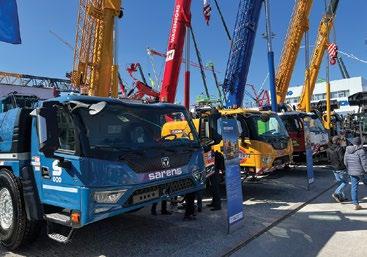
The two cranes are equipped with 48 metre, six section pinned booms, topped by a 9.2 to 16 metre bi-fold offsetable swingaway extension that takes the maximum tip height to around 66 metres.
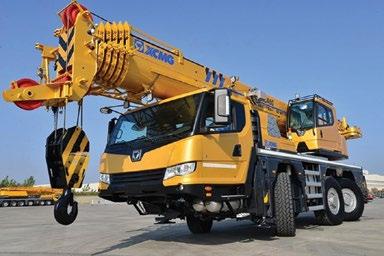
The XCA60_EV hybrid model combines a Mercedes diesel with a 170kW electric motor, which according to the company typically reduces fuel consumption by around 40 percent compared to the pure diesel model. The XCA60E became the world's first 60 tonne hybrid All Terrain crane when it joined the fleet of Dutch company Wagenborg Nedlift in 2023.
The diesel XCA60_E is principally designed for urban lifting, port logistics and sites with strict environmental regulations. It features XCMG's XEC electronic control technology to maximise battery efficiency and includes fast charging capabilities.
All electric city crane
After a popular initial phase some 10 or so years ago the All Terrain City type crane market has been relatively quiet. Italian manufacturer Marchetti however has launched a new 15 tonne all electric model - the Trio 0E. Power comes from a 230Ah 2LiFe lithium battery pack providing a maximum travel speed of 40kmph. The crane features a five section 19 metre boom with a maximum tip height of 21 metres, at which point it can handle four tonnes. The outrigger footprint is 4.1 by 4.3 metres, with two reduced width settings. A tilting cab is standard.
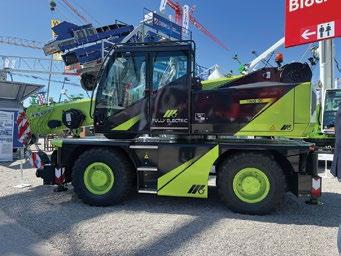
The compact machine has an overall weight of 14 tonnes with four wheel electric drive, four wheel steer, dual oscillating axles and pneumatic suspension that locks automatically in pick & carry mode where it has a 5.5 tonne capacity. However, like many all electric machines, the price is almost double that of a diesel crane, which is likely to put off most potential buyers. ■
